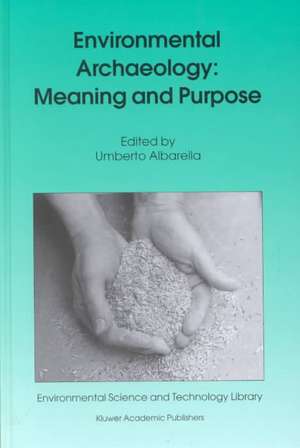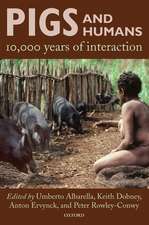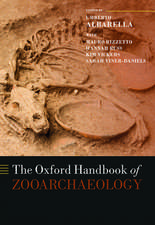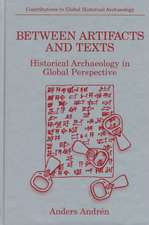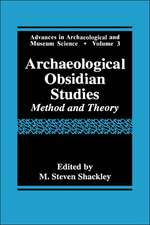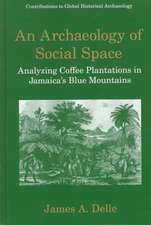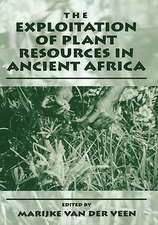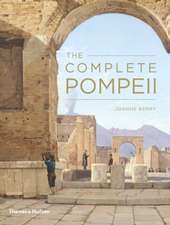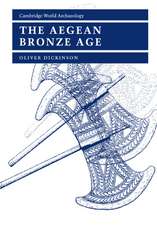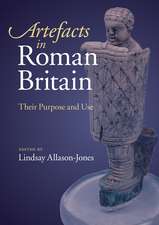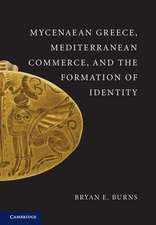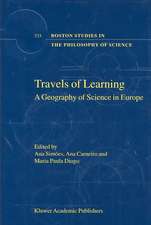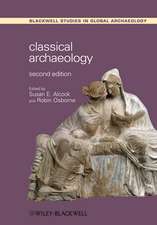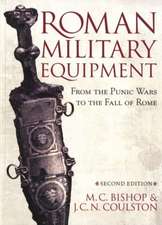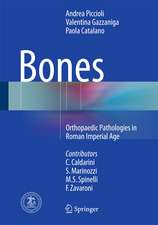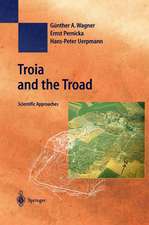Environmental Archaeology: Meaning and Purpose: Environmental Science and Technology Library, cartea 17
Editat de Umberto Albarellaen Limba Engleză Hardback – 31 ian 2001
| Toate formatele și edițiile | Preț | Express |
|---|---|---|
| Paperback (1) | 946.41 lei 6-8 săpt. | |
| SPRINGER NETHERLANDS – 9 dec 2010 | 946.41 lei 6-8 săpt. | |
| Hardback (1) | 952.72 lei 6-8 săpt. | |
| SPRINGER NETHERLANDS – 31 ian 2001 | 952.72 lei 6-8 săpt. |
Din seria Environmental Science and Technology Library
- 15%
 Preț: 642.51 lei
Preț: 642.51 lei - 18%
 Preț: 955.70 lei
Preț: 955.70 lei - 24%
 Preț: 806.23 lei
Preț: 806.23 lei - 15%
 Preț: 637.28 lei
Preț: 637.28 lei - 18%
 Preț: 952.72 lei
Preț: 952.72 lei - 20%
 Preț: 573.77 lei
Preț: 573.77 lei - 15%
 Preț: 583.75 lei
Preț: 583.75 lei -
 Preț: 387.20 lei
Preț: 387.20 lei - 5%
 Preț: 1097.36 lei
Preț: 1097.36 lei - 5%
 Preț: 1107.21 lei
Preț: 1107.21 lei - 18%
 Preț: 952.89 lei
Preț: 952.89 lei - 18%
 Preț: 954.62 lei
Preț: 954.62 lei - 5%
 Preț: 1098.12 lei
Preț: 1098.12 lei - 18%
 Preț: 1229.40 lei
Preț: 1229.40 lei - 5%
 Preț: 1423.79 lei
Preț: 1423.79 lei - 5%
 Preț: 1433.83 lei
Preț: 1433.83 lei - 5%
 Preț: 1106.69 lei
Preț: 1106.69 lei - 18%
 Preț: 951.14 lei
Preț: 951.14 lei - 18%
 Preț: 729.19 lei
Preț: 729.19 lei - 18%
 Preț: 953.65 lei
Preț: 953.65 lei - 18%
 Preț: 954.14 lei
Preț: 954.14 lei - 15%
 Preț: 646.62 lei
Preț: 646.62 lei - 20%
 Preț: 590.95 lei
Preț: 590.95 lei -
 Preț: 428.56 lei
Preț: 428.56 lei - 15%
 Preț: 705.99 lei
Preț: 705.99 lei - 24%
 Preț: 840.17 lei
Preț: 840.17 lei - 24%
 Preț: 838.81 lei
Preț: 838.81 lei
Preț: 952.72 lei
Preț vechi: 1161.85 lei
-18% Nou
Puncte Express: 1429
Preț estimativ în valută:
182.32€ • 197.98$ • 153.15£
182.32€ • 197.98$ • 153.15£
Carte tipărită la comandă
Livrare economică 22 aprilie-06 mai
Preluare comenzi: 021 569.72.76
Specificații
ISBN-13: 9780792367635
ISBN-10: 0792367634
Pagini: 326
Ilustrații: X, 326 p.
Dimensiuni: 156 x 234 x 21 mm
Greutate: 0.65 kg
Ediția:2001
Editura: SPRINGER NETHERLANDS
Colecția Springer
Seria Environmental Science and Technology Library
Locul publicării:Dordrecht, Netherlands
ISBN-10: 0792367634
Pagini: 326
Ilustrații: X, 326 p.
Dimensiuni: 156 x 234 x 21 mm
Greutate: 0.65 kg
Ediția:2001
Editura: SPRINGER NETHERLANDS
Colecția Springer
Seria Environmental Science and Technology Library
Locul publicării:Dordrecht, Netherlands
Public țintă
ResearchCuprins
Exploring the real Nature of environmental archaeology. An introduction.- Meaning and Purpose.- Economic prehistory or environmental archaeology? On gaining a sense of identity.- Re-inventing environmental archaeology. A comment on “Economic prehistory or environmental archaeology? On gaining a sense of identity”.- Whose dichotomy is it anyway? A reply to Hamilakis.- Environmental archaeology is not human palaeoecology.- Environmental archaeology is dead: long live bioarchaeology, geoarchaeology and human palaeoecology. A comment on “Environmental archaeology is not human palaeoecology”.- A reply to Thomas.- The poverty of empiricism and the tyranny of theory.- Commercialising the palaeoenvironment. Developer funding and environmental archaeology.- The responsibilities of archaeologists to nature conservation.- Sustainability and the rate of change. A comment on “The responsibilities of archaeologists to nature conservation”.- A reply to Graves-Brown.- What is geoarchaeology? Re-examining the relationship between archaeology and earth sciences.- Is human osteoarchaeology environmental archaeology?.- Case Studies.- The rhetoric of people and grains.- A match made in heaven or a marriage of convenience? The problems and rewards of integrating palaeoecological and archaeological data.- Historical archaeology and new directions in environmental archaeology. Examples from Neolithic Scandinavia and Venezuela (400–1400 AD).- Can’t see the wood for the trees. Interpreting woodland fire history from microscopic charcoal.- The potential for using religious belief to derive environmental information on past societies, with a case study on the environment of Attica.- Reconstructing house activity areas.- Environmental archaeology and the interpretation of socialspace. A comment on “Reconstructing house activity areas”.- When method meets theory. The use and misuse of cereal producer/consumer models in archaeobotany.- Producers and consumers in archaeobotany. A comment on “When method meets theory: the use and misuse of cereal producer/consumer models in archaeobotany”.- Conclusions.- Agendas for environmental archaeology.
